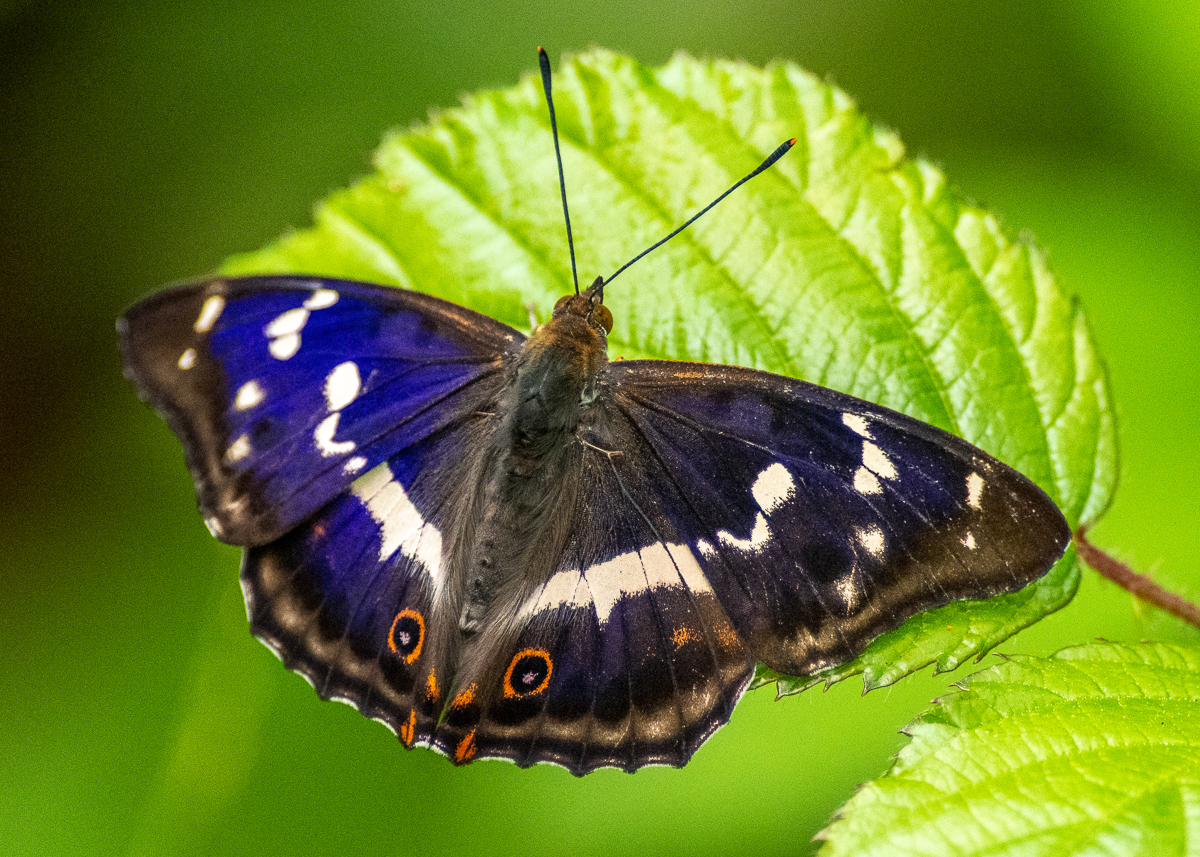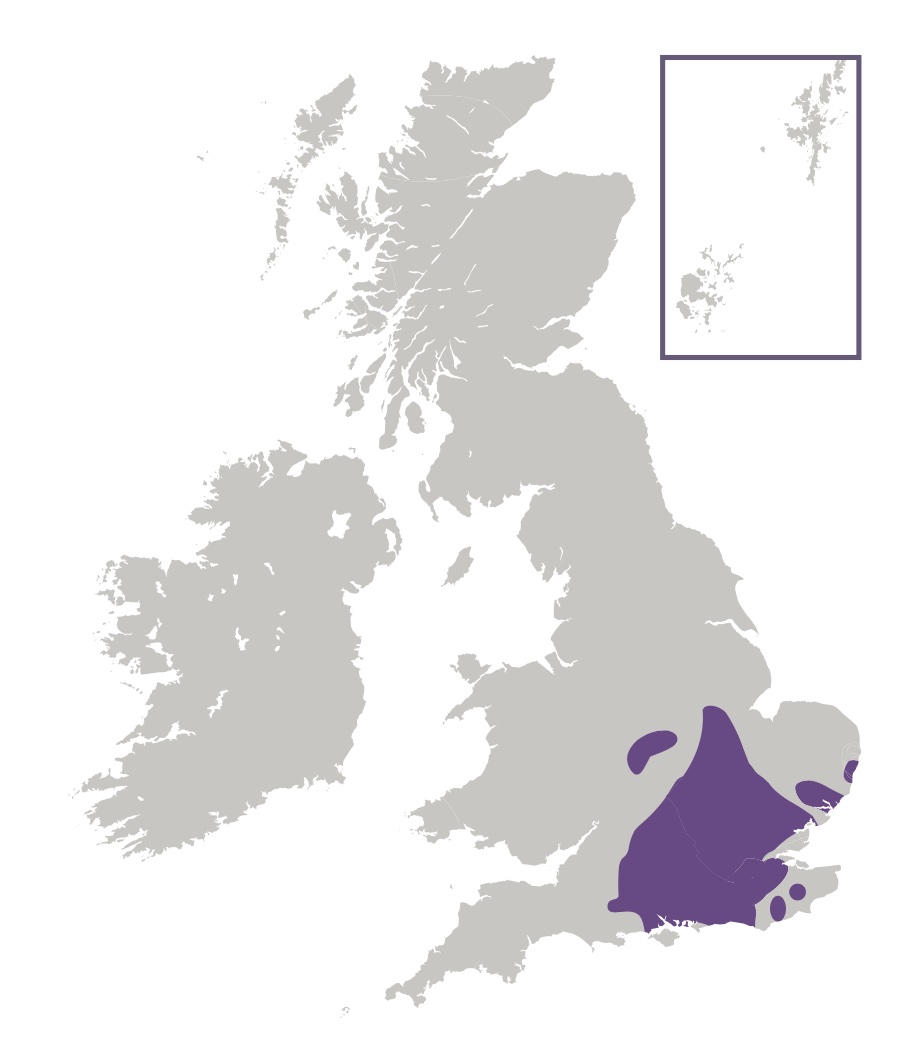
Photo © KEC
The Purple Emperor is a magnificent and elusive insect that is actively sought out by the many subjects of "His Majesty", as the male butterfly is affectionately known. This butterfly spends most of its time in the woodland canopy where it feeds on aphid honeydew, with the occasional close encounter when it comes down to feed on sap runs or, in the case of the male, animal droppings, carrion or moist ground that provide much-needed salts and minerals. Those that make pilgrimages to see this spectacular creature will often try and lure the males down from the canopy using all manner of temptations - including banana skins and shrimp paste.
The male butterfly is one of the most beautiful of all of the butterflies found in the British Isles. From certain angles it appears to have black wings intersected with white bands. However, when the wings are at a certain angle to the sun, the most beautiful purple sheen is displayed, a result of light being refracted from the structures of the wing scales. The female, on the other hand, is a deep brown and does not possess the purple sheen found in the male.
This is one of the most-widely studied and written about butterflies in the British Isles. The classic work "Notes and Views of the Purple Emperor" by Heslop, Hyde and Stockley is dedicated to this butterfly, as is the modern-day equivalent - the excellent website The Purple Empire. This butterfly is confined to deciduous woodland in central southern England, between South Wiltshire and South Hampshire in the west, Surrey and West Sussex in the east, and Oxfordshire and Hertfordshire in the north, with scattered colonies elsewhere. It is not found in the north of England, Scotland, Ireland, the Isle of Man or the Channel Islands and has not been seen in Wales since the 1930s. Colonies vary in size, some being very small with just a dozen or so adults forming a viable colony.
This species is best seen in early morning and again in late afternoon, when the males will come down to the ground to feed on moisture from damp earth and animal droppings. The males are sometimes so engrossed in feeding that they will spend over an hour feeding in the same place, each displaying its characteristic yellow proboscis. The males are also notorious for feeding on mud and other debris that has gathered on surfaces of cars parked within the woodland. They are also partial to sweat and readily land on observers. However, both male and female spend the majority of their time resting high in the tree canopy and out of sight.
In late morning, the males will fly off and ultimately congregate at so-called "master trees" that provide a vantage point for intercepting passing females. These trees are typically at a high point in the wood, such as trees growing on the summit of a hill, and the same trees are used year after year. Locating a master tree is one of the best ways to catch a glimpse of this elusive insect. Seeing the males battle it out for the best vantage points, with flashes of purple as the light hits their wings, is an amazing spectacle.
When a virgin female is encountered, the pair fly off and settle in the canopy where mating takes place. If the female has already mated, then she has the curious habit of descending straight to the ground, where the male ultimately loses interest and returns to his perch.

This is a butterfly of large expanses of deciduous woodland, usually those containing oaks, but less-frequently beech and other species.
The primary larval foodplant is Goat Willow (Salix caprea). Grey Willow (Salix cinerea) and Hybrid Crack-willow (Salix x fragilis) are also used.
